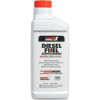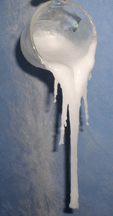RAMKing1
Active Member
- Joined
- Oct 11, 2021
- Messages
- 35
- Reaction score
- 32
- Points
- 18
- Age
- 54
My Rebel w/ Ecodiesel is hopefully going to be at the dealer next week and after the last week and next week's forecast in NY, it is COLD. This is my first diesel and I've heard of places selling a winter blend but when I asked the guy at BJ's gas station what they sold all he could say was it was diesel.
- How do you know if fuel from the pump has some winter blend to stop gelling? All stations I saw a pump didn't have anything on the pump that said winter blend.
- If not sure, should I just add some Anti-Gel or is it bad for the motor to add it to fuel that may be already treated?
- Anyone in Orange county NY area have a station they recommend to buy diesel?
- How do you know if fuel from the pump has some winter blend to stop gelling? All stations I saw a pump didn't have anything on the pump that said winter blend.
- If not sure, should I just add some Anti-Gel or is it bad for the motor to add it to fuel that may be already treated?
- Anyone in Orange county NY area have a station they recommend to buy diesel?















